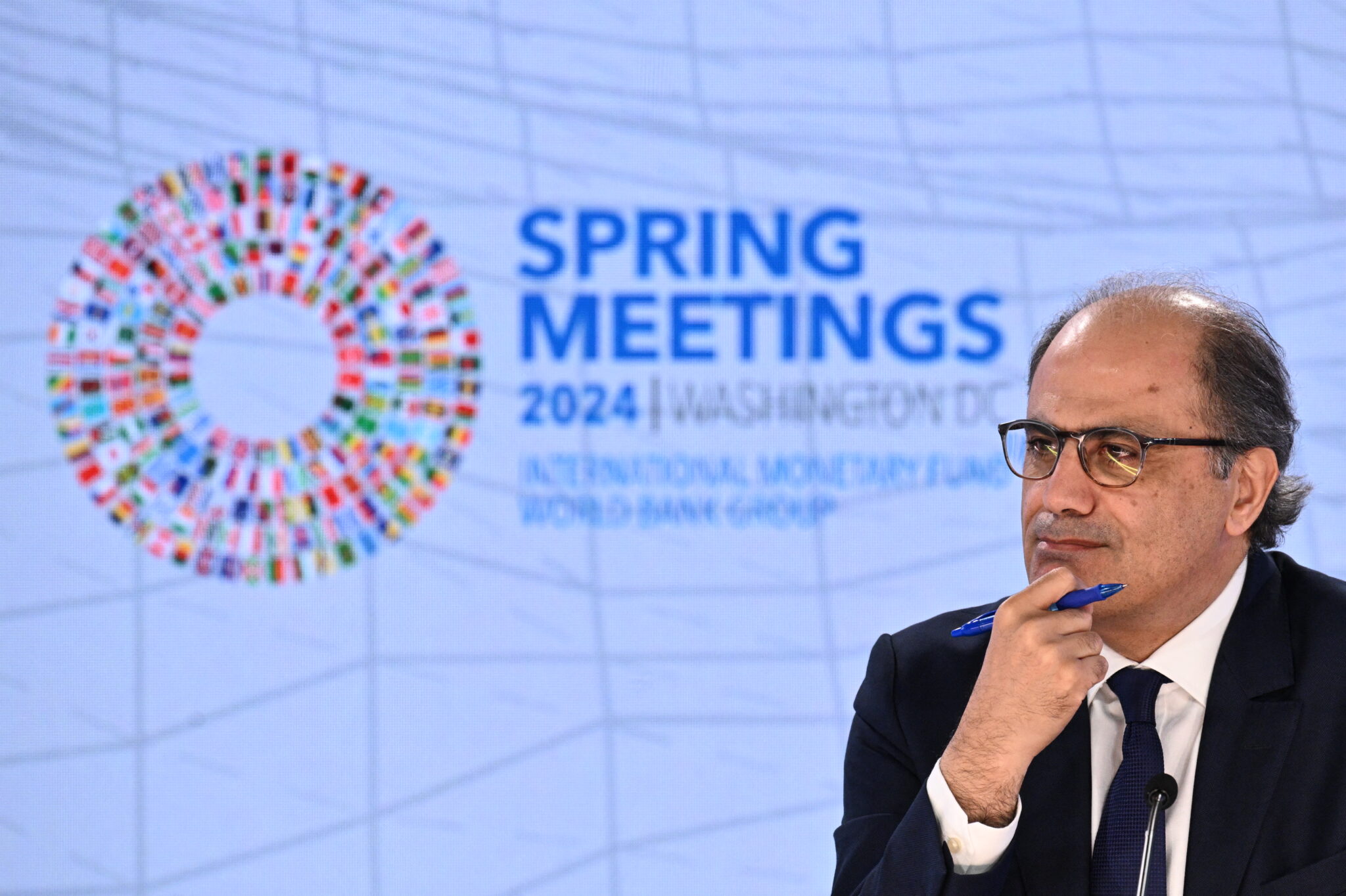ASTANA — Jihad Azour, the Director of the Middle East and Central Asia Department at the International Monetary Fund (IMF), emphasized the expectation of an uneven recovery among economies in the Central Asia and Caucasus (CCA) region amidst significant uncertainty during an April 18 press briefing in Washington D.C.. While inflation trends align with global patterns across most countries, growth prospects vary both between and within regions, according to the recent Regional Economic Outlook for the Middle East and Central Asia.

International Monetary Fund (IMF) Director of the Middle East and Central Asia Department, Jihad Azour (R), speaks during a briefing on the outlook for the Middle East and Centra Asia during the IMF-World Bank Group spring meetings at IMF headquarters in Washington, DC, on April 18, 2024. Photo credit: Mandel NGAN / AFP
“The CCA economies exhibit continued resilience. Despite some moderation, growth is projected to remain robust at 3.9% in 2024 before picking up to 4.8% in 2025,” Azour said.
Factors contributing to this growth include relaxed macro policies, robust domestic demand and specific factors like rises in oil production. In the medium term, steady growth is predicted for oil importers, whereas oil exporters might encounter challenges due to stagnating hydrocarbon production.
Inflation trends are aligning with global patterns, with the majority of CCA countries either below or close to historical average targets. This provides room for some countries to initiate or continue monetary easing.
Azour highlighted a forecasted easing of inflation to 7.7% in 2024 and 7.1% in 2025, emphasizing the importance of continued vigilance in monetary policy.
Policy recommendations and opportunities
Despite positive growth prospects, vulnerabilities remain high amidst elevated uncertainties and downside risks. Azour highlighted that risks for CCA economies mainly arise from potential slowdowns in trading partners and worsening geoeconomic conditions related to the conflict in Ukraine.
“Policymakers face the difficult task of safeguarding macroeconomic stability and debt sustainability while
navigating geopolitical challenges and improving medium-term growth prospects,” he said.
He stressed that monetary policy should remain vigilant and cautious of premature or excessive easing. In addition, strengthening monetary policy frameworks and increasing transparency while ensuring central bank independence are essential.
The IMF recommends that due to varying public sector debt levels, fiscal policies and active debt management are crucial to reducing high debt levels decisively. Additionally, amidst heightened uncertainty, countries are encouraged to accelerate reforms to fortify their economic fundamentals, including strengthening institutions. To take advantage of potential opportunities from new trade routes, countries should focus on reducing trade barriers, diversifying products and markets, as well as improving infrastructure.
Middle Corridor: A vital catalyst for regional growth
Trade diversion is reshaping trade in the CCA region, with significant shifts in trade flows observed following the onset of the conflict in Ukraine.
One notable feature of the economic landscape in the Middle East and Central Asia is the rise of the Middle Corridor, also referred to as the Trans-Caspian International Transport Route. This interconnected network links China and Europe, presenting significant opportunities for regional progress. The volumes transported through the Middle Corridor have grown substantially, rising from 600,000 tons in 2021 to 2.7 million tons in 2023. While accounting for only a small share of overall trade between China and Europe, the Middle Corridor offers important potential for the Caucasus and Central Asia region’s development and integration into global supply chains.
However, challenges such as high transport costs, long and unpredictable transit times, and regulatory complexities need to be addressed to fully unlock the corridor’s potential. The IMF recommends streamlining border procedures, enhancing automation, and standardizing regulations across Middle Corridor nations. Infrastructure enhancements such as improving transshipment efficiency, expanding Caspian Sea fleets, and upgrading railways and roads are imperative. Cooperation among countries and incentives for private sector participation are vital. Regional initiatives like the 2022–27 Roadmap signed by Azerbaijan, Georgia, Kazakhstan, and Türkiye demonstrate progress toward Middle Corridor development.
